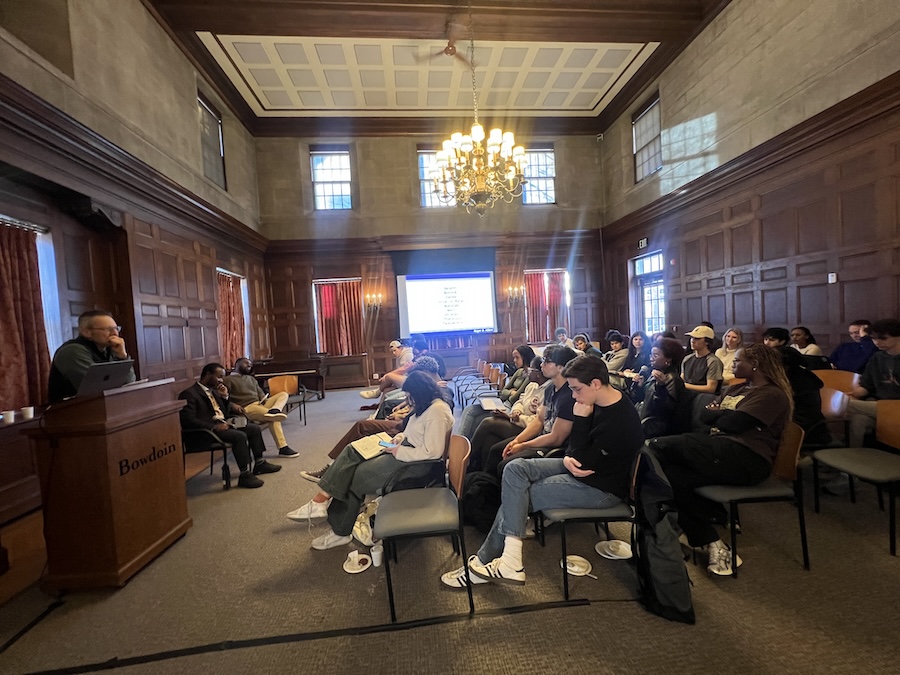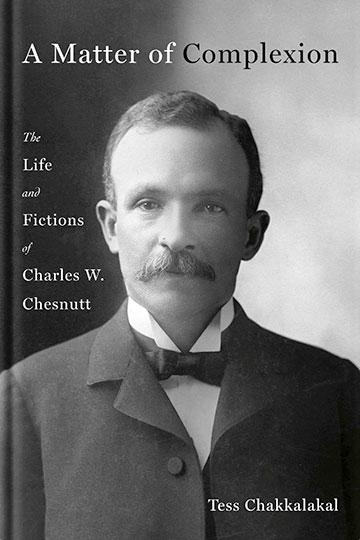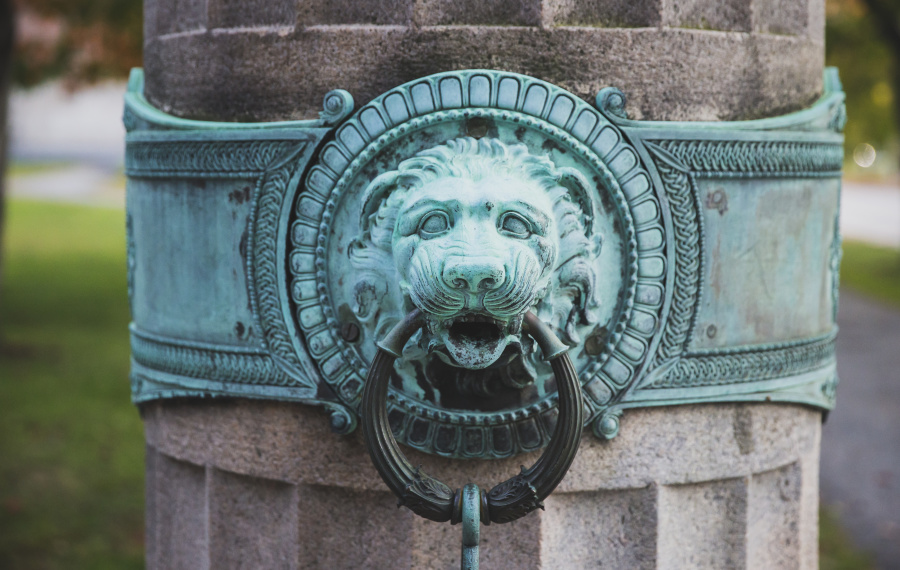"Cotton Town" Reveals Maine's Links to the Slave Trade
By Rebecca Goldfine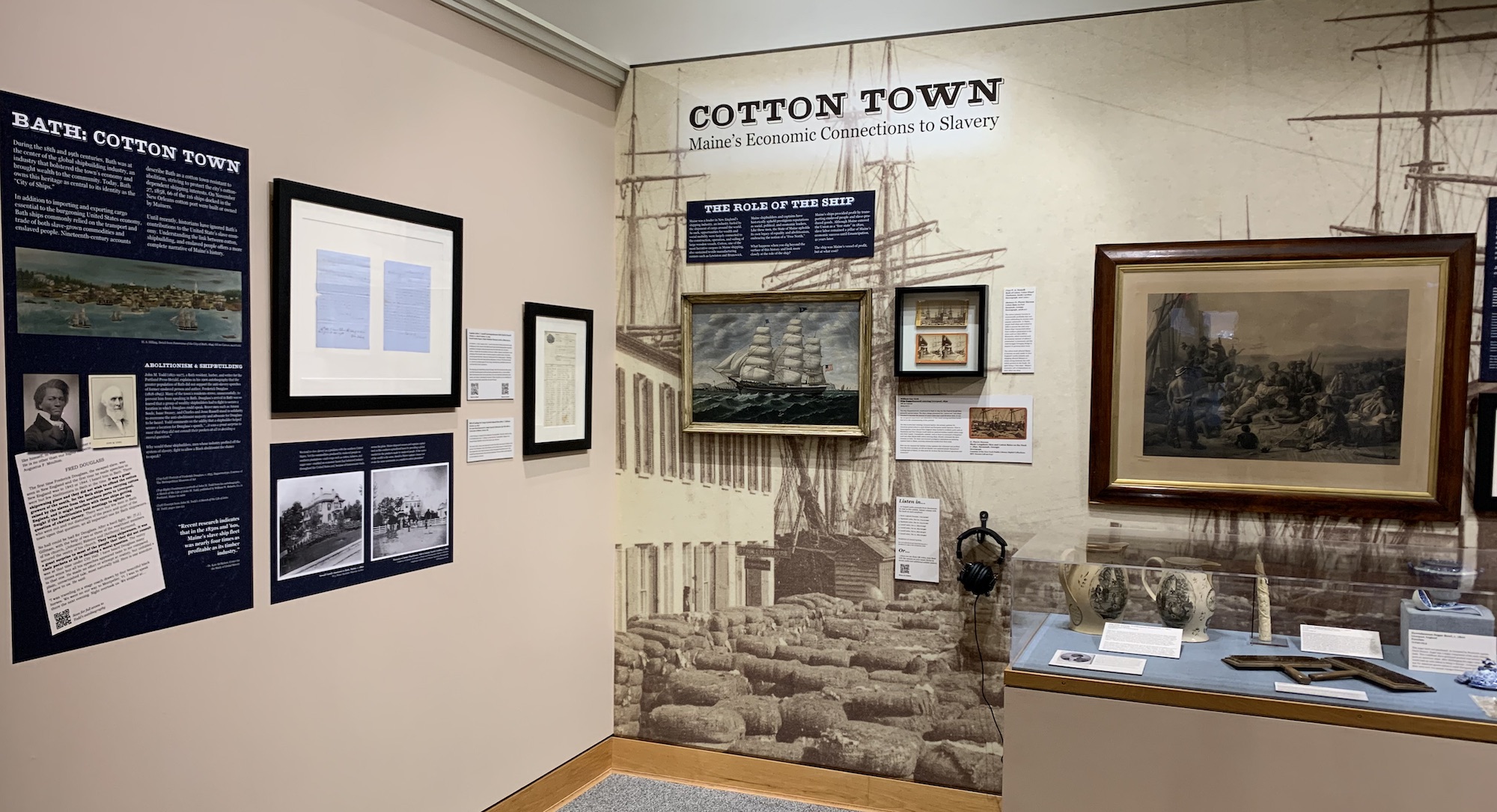
The museum show focuses on Bath, "the City of Ships," a community just north of Brunswick on Route 1. Using evidence like photographs, letters, artifacts, and recordings, it explores the city's role in the global shipbuilding industry and helps reveal why a majority of its population in the nineteenth century resisted abolition.
"We tend to view slavery as a problem with the southern United States," a wall text explains. "Yet the commodities produced by enslaved people on southern plantations—cash crops such as cotton, tobacco, and sugar cane—enabled an economic boom that bolstered industry throughout the United States..."
This boom included Bath, where wealthy sea captains and shipbuilders provided the means to transport these products from ports in the South, along the eastern seaboard, and over to Europe. Additionally, cotton from the South helped sustain lucrative textile mills in communities like Lewiston and Brunswick.
And, despite Maine's prohibition of slavery, at least one sea captain, John C. Lowell, transported enslaved people on his Bath-built ship, the John C. Calhoun, which was owned by the Bath shipping fleet Clark & Sewall.
The museum displays papers from this transaction, including an extraordinary bill of lading—the receipt of a ship's cargo—from the Calhoun that lists ninety-three enslaved people on board, as well as their ages and prices. The lading, signed in Baltimore on October 24, 1850, indicated the ship was bound for New Orleans.
"Although Maine entered the union as a 'free state' in 1820, slave labor remained a pillar of Maine's economic success until Emancipation, forty-one years later," according to the exhibition curators.
Alongside the exhibit, the Maine Maritime Museum will host a series of talks over the spring semester, starting with historian Seth Goldstein on Feb. 9. His talk, about the economics of enslavement and Maine, will be held at the museum's location on 243 Washington Street, Bath.
Tess Chakkalakal, Bob Greene, and Kate McMahon will also give talks about the Bowdoin collaboration with the museum, African-American maritime history in Maine, and Maine seafaring families and the Atlantic slave trade.
All the museum events are free, but preregistration is required.
Introduction to Africana Studies, with Tess Chakkalakal
The thirty-five students in the fall semester's introductory Africana studies course researched, designed, and installed Cotton Town. They were advised by the museum's educational team, Sarah Timm and Luke Gates-Milardo ’14, and their professor, Associate Professor of Africana Studies and English Tess Chakkalakal.
One of the catalysts for Cotton Town was the unexpected discovery of Lowell's bill of lading in the University of Maine's archives in Orono, according to Gates-Milardo. This finding coincided with the Maine Maritime Museum's commitment to reassess its archives and search for ways to include more "underrepresented perspectives in the history of sea trade and travel," Kyubin Kim ’22 reported earlier this fall.
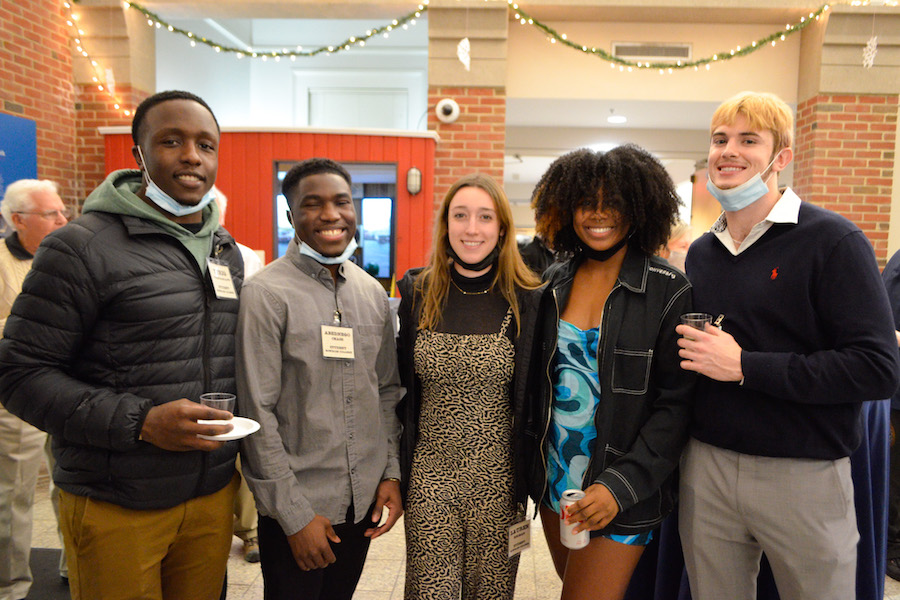

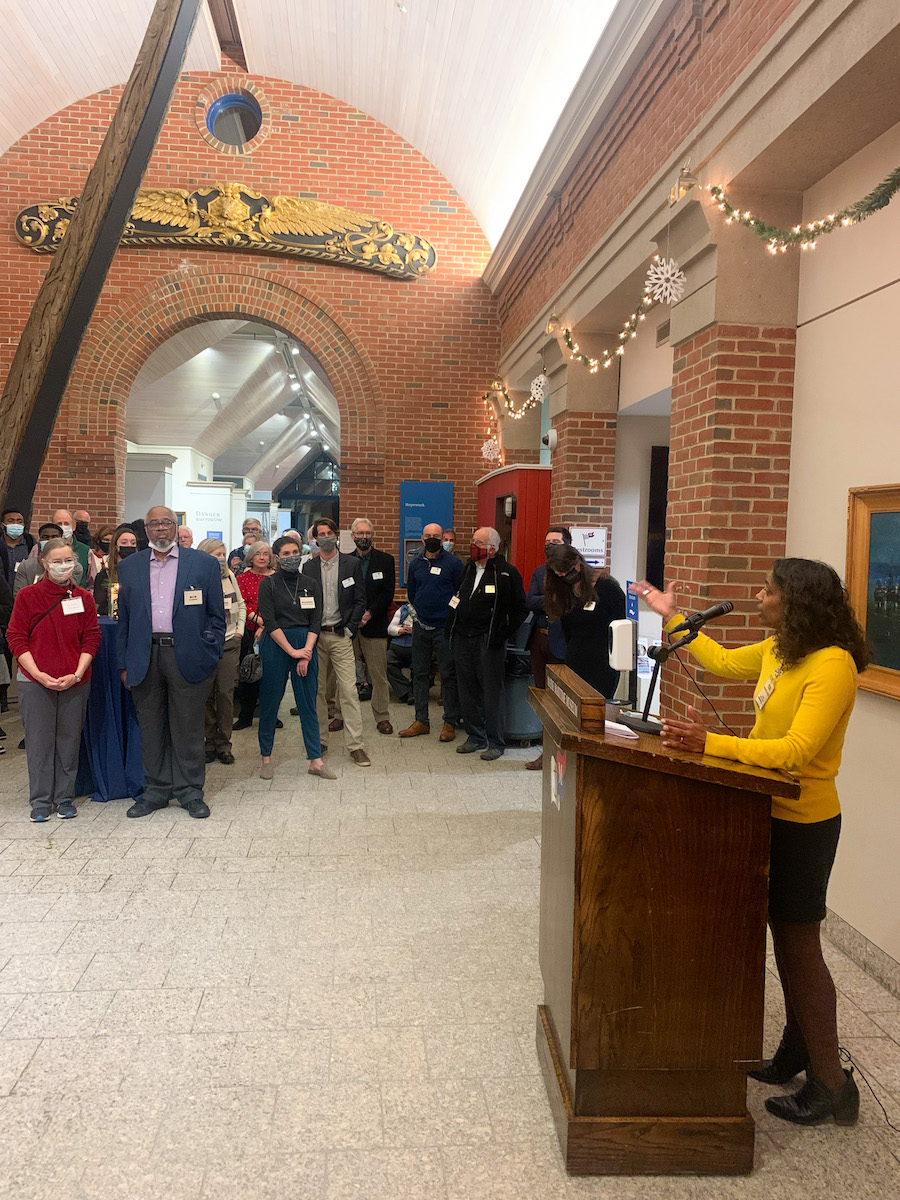
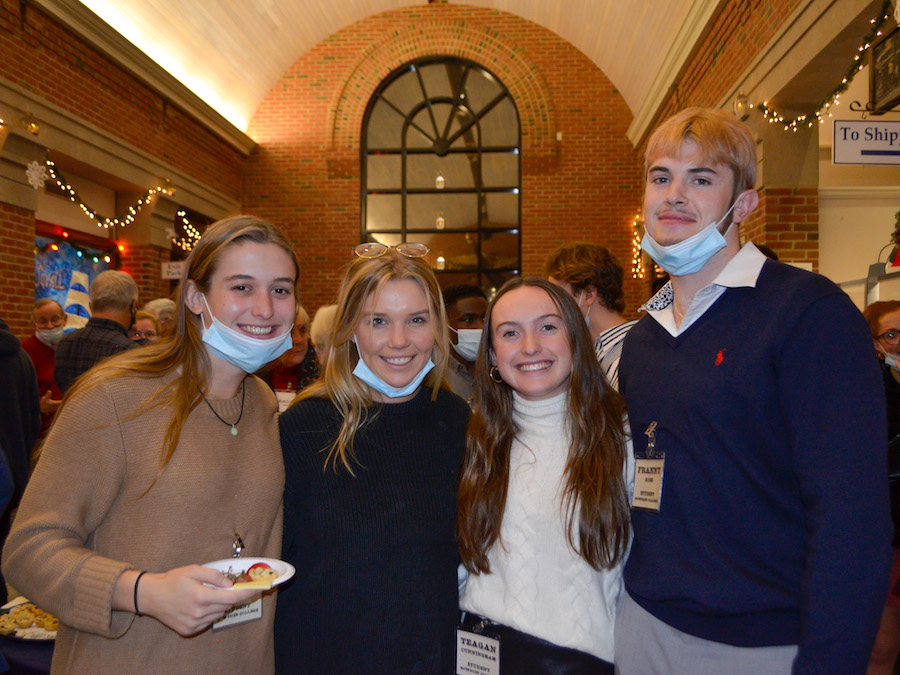
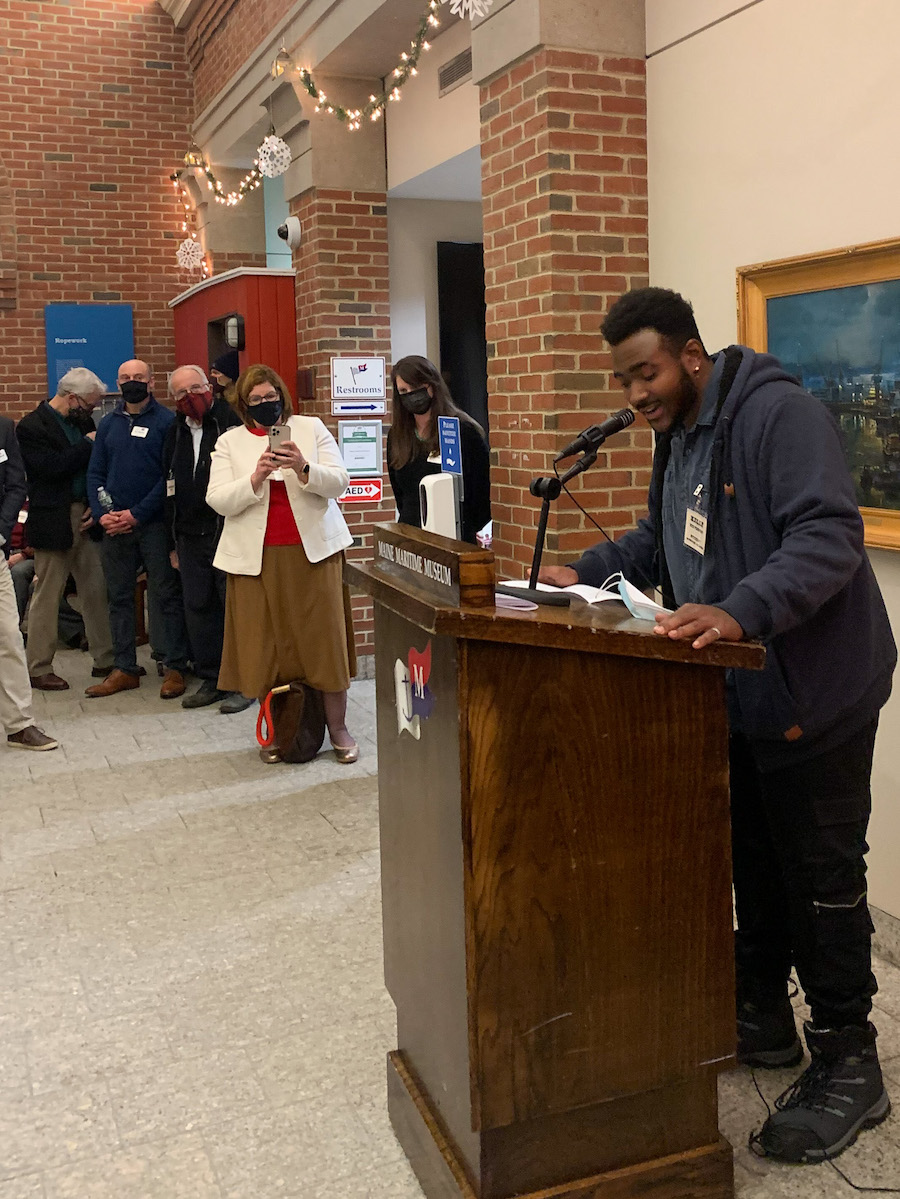
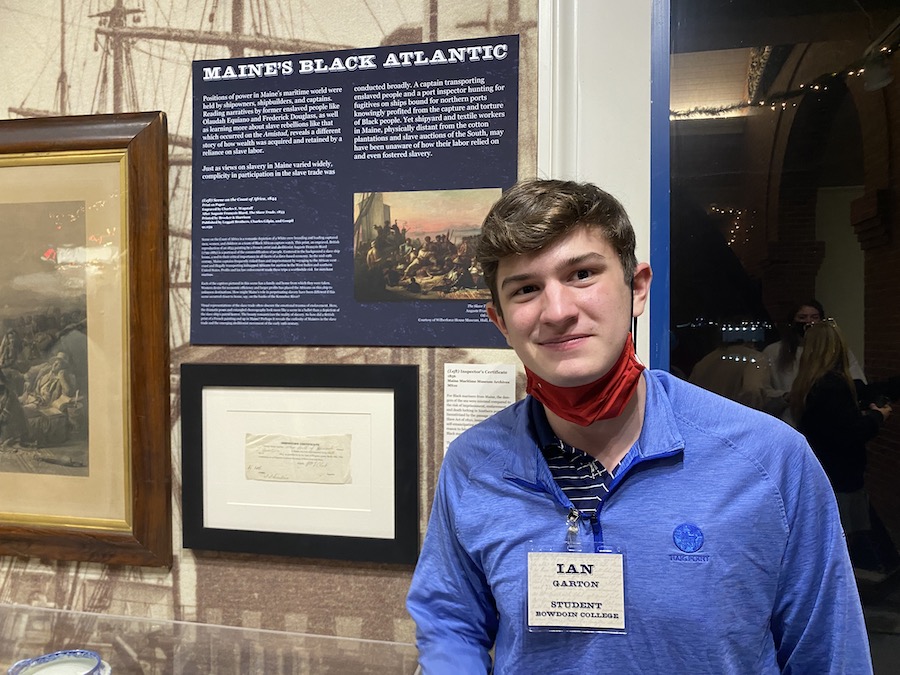
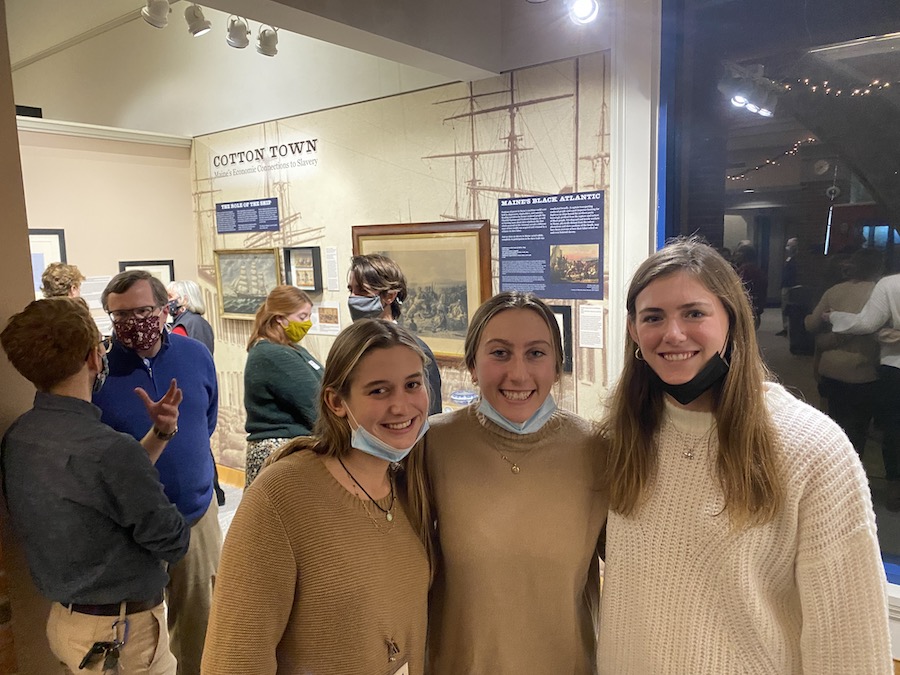
When Gates-Milardo and Timm reached out to Chakkalakal last summer to discuss ways to begin chronicling the untold stories of Maine's maritime past, she suggested they collaborate with her introductory class, which includes first-years to seniors.
Chakkalakal said the semester was a lively and intense one, with plenty of agreement and disagreement and the testing and contesting of arguments. "The students' sense of curiosity was totally insatiable," she said. "They were open to new ideas and to changing their minds."
As the class progressed through the course's syllabus and readings, they simultaneously worked on developing Cotton Town. In small groups, they focused on different aspects of the exhibit, from selecting artifacts to writing wall texts and designing the overall layout.
One of the students, Kelly Stevenson ’24, spoke at Cotton Town's opening on December 15. "Working collaboratively in this way came with the challenge of handling disagreements," he said. (Other students echoed his observation, noting the topic of slavery and Black history in the US brings up many emotions.) "However, we listened to one another, understood others' points of view, negotiated powerful alternatives, and compromised on decisions."
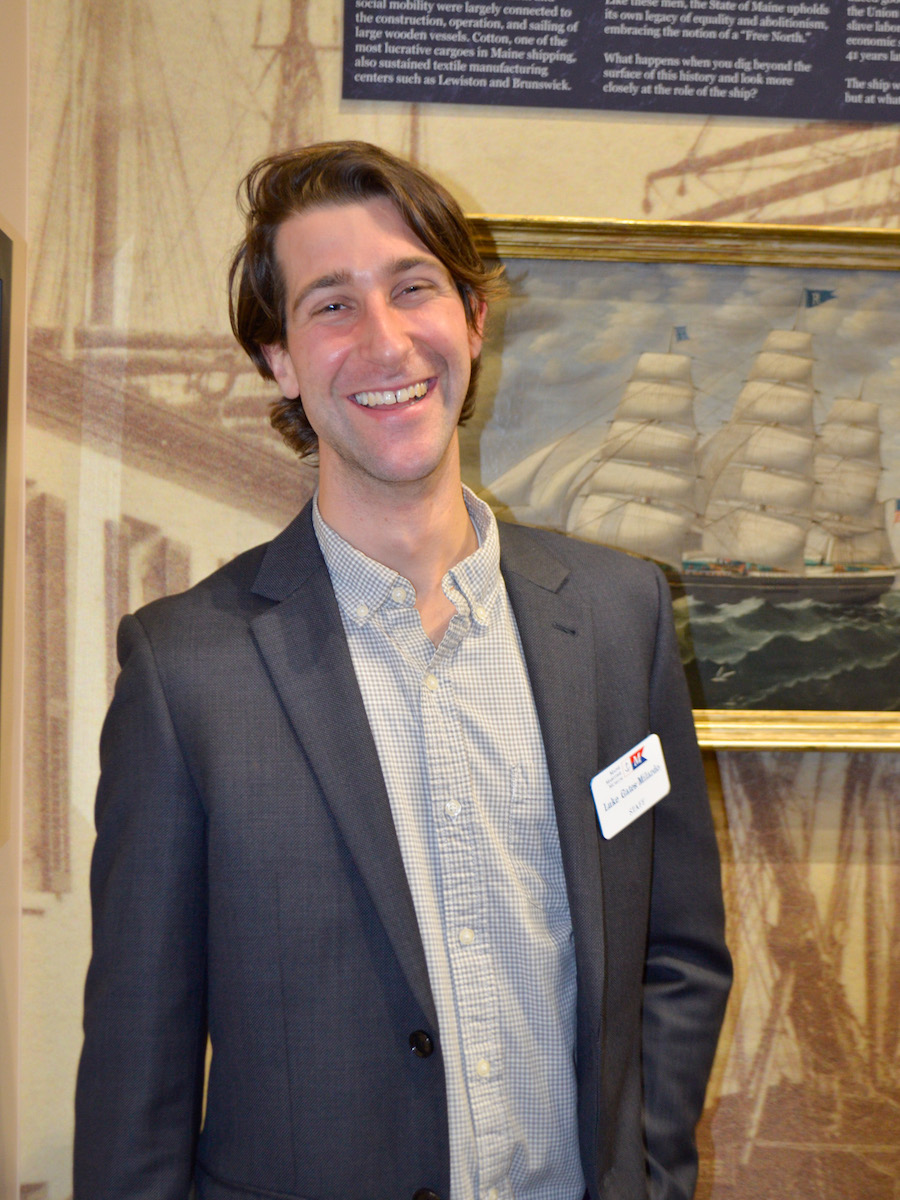
He said that the process of studying African American history while simultaneously working with the museum deepened his understanding of the country's history and of slavery. "History is not about having all the answers but telling a more complete story of the past," he added.
And history is also about asking more questions, the exhibit suggests. Students wrote the wall texts with queries interspersed with explanations of their findings: "If the source of the wealth is the same, should a Maine captain's house not evoke the same sentiments as a southern cotton plantation?" "The ship was Maine's vessel of profit, but at what cost?" "Where else can you find suppressed Black histories?"
Peyton Mulhern ’23 said the decision to conclude the exhibit with a question about uncovering other suppressed stories raised yet another debate among her classmates. "We went back and forth on it," she said. "We wanted to inspire people to take action or question what they think they know."
Kaitlin Weiss ’25 agreed. "It was a call to introspection versus a call to action," she said. "We wanted to find a balance."
Photos by Katie Spiridakis, courtesy of the Maine Maritime Museum.
